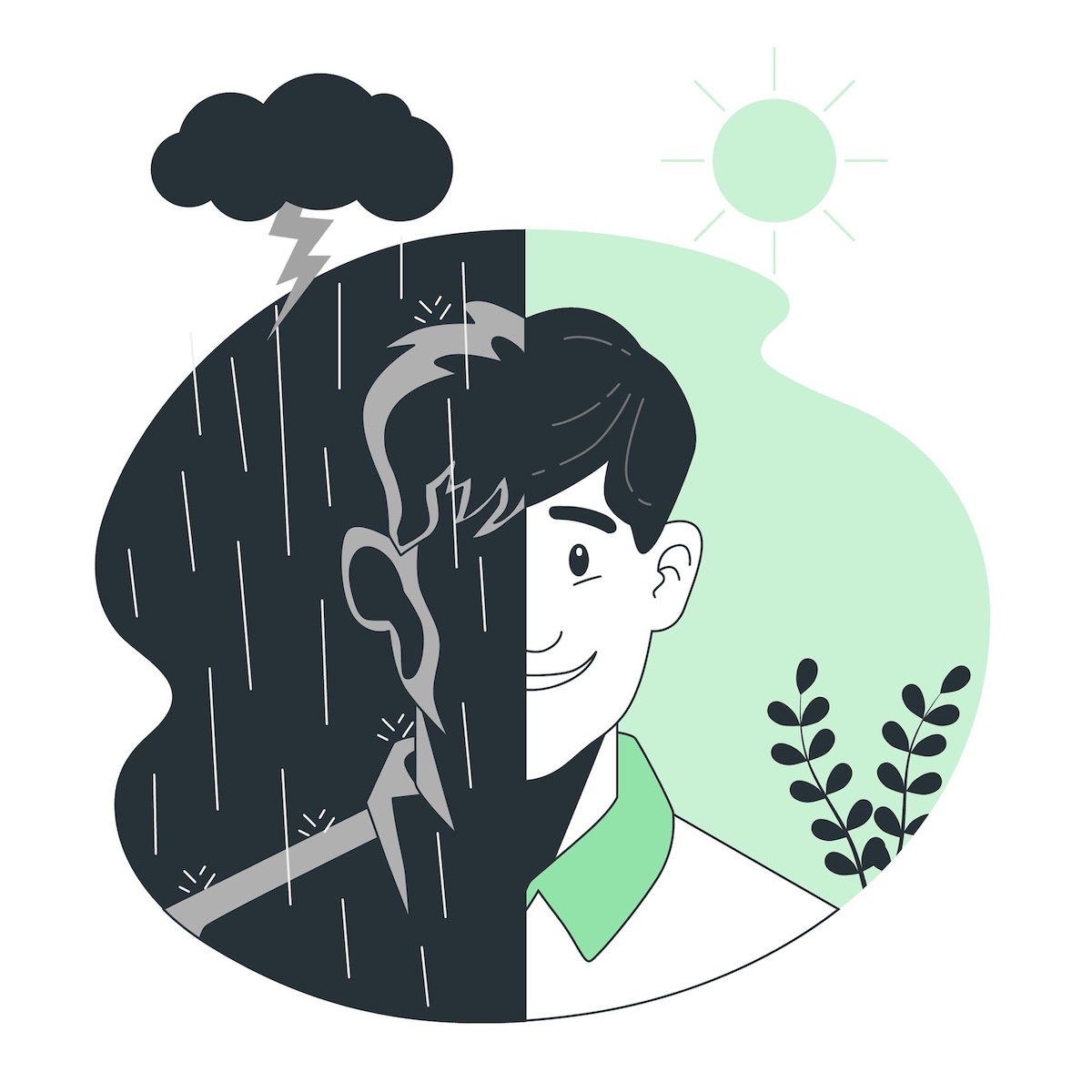Bipolar disorder is a mental health condition that causes extreme shifts in mood, energy, and activity levels. These changes can make it hard to carry out day-to-day tasks. People with bipolar disorder go through periods of intense highs and lows. These mood swings are more severe than normal ups and downs and can affect relationships, work, and overall quality of life.

Even though bipolar disorder is a lifelong condition, it can be managed with proper treatment and support. Many people with this condition live full, productive lives when their symptoms are under control.
What Is Bipolar Disorder?
Bipolar disorder, once known as manic-depressive illness, causes a person to experience episodes of mania or hypomania (high moods) and depression (low moods). These mood episodes are different from typical mood changes because they last longer, are more intense, and often interfere with daily functioning.
During a manic episode, someone might feel extremely happy, energetic, or even irritable. They may talk fast, take risks, or feel like they don’t need sleep. On the other hand, a depressive episode brings feelings of sadness, hopelessness, low energy, and loss of interest in activities once enjoyed.
Types of Bipolar Disorder
There are different types of bipolar disorder, each with its own pattern of mood swings. The most common types include:
-
Bipolar I disorder, where manic episodes last at least seven days or are severe enough to need hospital care. Depressive episodes often follow.
-
Bipolar II disorder, which involves less intense manic episodes called hypomania, along with longer depressive episodes.
-
Cyclothymic disorder (cyclothymia), where mood swings are milder but happen more often over at least two years.
-
Other types, including cases caused by medication, drug use, or medical conditions.
The type someone has helps doctors decide on the best treatment approach.
What Causes Bipolar Disorder?
The exact cause of bipolar disorder isn’t fully understood, but it likely involves a mix of factors. Genetics play a major role—if someone has a close relative with bipolar disorder, their risk of developing it is higher. However, not everyone with a family history will get it.
Chemical imbalances in the brain, particularly involving mood-related neurotransmitters like serotonin and dopamine, may also contribute. Brain structure and function can differ in people with bipolar disorder, though more research is still needed to understand how.
Environmental triggers can also influence bipolar episodes. Stressful life events, such as trauma, the loss of a loved one, or financial struggles, may trigger symptoms in someone who is already at risk.
Symptoms of Bipolar Disorder
Symptoms depend on whether a person is going through a manic, hypomanic, or depressive episode. The shifts in mood can happen suddenly or develop over days or weeks. Manic or hypomanic symptoms may include:
-
Feeling overly happy, energetic, or excited
-
Talking very fast or jumping from one idea to another
-
Feeling overly confident or having grand ideas
-
Needing less sleep
-
Taking risks, such as spending too much money or making unsafe decisions
-
Being easily distracted or restless
Depressive symptoms may include:
-
Feeling sad, hopeless, or empty
-
Losing interest in activities
-
Sleeping too much or too little
-
Feeling tired all the time
-
Having trouble concentrating
-
Feeling worthless or guilty
-
Thinking about death or suicide
Some people with bipolar disorder may also experience mixed episodes, where symptoms of mania and depression happen at the same time. This can be especially confusing or distressing.
How Bipolar Disorder Is Diagnosed
Diagnosing bipolar disorder isn’t always easy. It can sometimes be mistaken for depression or other mental health conditions. A doctor or mental health professional will start by asking about your mood, energy, sleep, behavior, and medical history.
There are no lab tests or brain scans that can diagnose bipolar disorder directly. Instead, doctors use interviews and standardized questions to understand the pattern of mood changes. They’ll also ask about how long the symptoms have lasted and how they’ve affected daily life.
It’s important to be honest and detailed when describing your symptoms. Sometimes, family members or close friends may be asked for input, since people experiencing mania may not realize their behavior is unusual.
Treatment Options
Bipolar disorder can’t be cured, but it can be treated effectively. The goal of treatment is to stabilize mood swings, reduce symptoms, and help people live balanced lives. A combination of medication, therapy, and lifestyle adjustments is usually the most effective approach. Common treatment options include:
-
Mood stabilizers, such as lithium, which help prevent extreme highs and lows
-
Antipsychotic medications, which may be used during manic or mixed episodes
-
Antidepressants, often combined with mood stabilizers to avoid triggering mania
-
Psychotherapy, including cognitive behavioral therapy (CBT), which helps people manage thoughts and behaviors
-
Psychoeducation, to learn more about the condition and how to recognize early warning signs
-
Lifestyle changes, such as maintaining regular sleep, reducing stress, and avoiding alcohol or recreational drugs
Some people benefit from support groups or family therapy. In severe cases, hospital care may be needed to ensure safety and stabilize symptoms.
Living With Bipolar Disorder
Living with bipolar disorder can be challenging at times, but with consistent treatment and support, many people manage their symptoms well. Sticking to your medication, going to therapy, and building healthy daily habits can make a big difference.
Keeping a mood journal can help you notice patterns or early signs of a mood episode. Having a support system—whether it’s family, friends, or a mental health team—can also help you stay on track and feel less alone.
Recovery takes time, and setbacks may happen. But with the right care, many people with bipolar disorder lead full, meaningful lives and do the things they care about.
